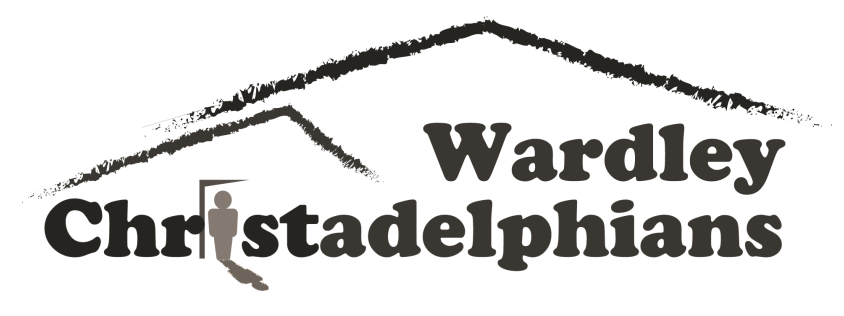Our History
The spiritual origins of the Christadelphian community are based on the Holy Bible. We have no other sacred books and we seek to base our beliefs and way of life on the Bible teachings and principles followed by the first century church
Dr John Thomas
Early Days
The Christadelphian community was founded by Dr John Thomas (1805-71), in the USA in 1848. Thomas was a British doctor who emigrated to the USA in 1832.
He was shipwrecked on his way to America, and while he was in danger he realised that he knew little about hope and what would happen to him after death. He decided that if he survived he would devote himself to religious studies. He was as good as his pledge.
In 1834, John Thomas founded a magazine called The Apostolic Advocate, in which he published his developing ideas of true and proper Christian beliefs.
In the 1840s his views attracted a following, and gradually congregations grew up.
One of his major works was a book called Elpis Israel, which was published in 1848, and set out the basis of his biblical faith.
He made several speaking tours of the UK during this time and attracted a growing following.
A Growing Community
The growing groups of believers became a recognised movement and took their present name in 1864, partly as a result of the American Civil War. Their principles meant that members had refused to fight and kill, and so claimed to be conscientious objectors. They could only do this if they were members of a recognised religious group that opposed war... and so the ‘Christadelphians’ came into being.
Their name comes from a Greek phrase, Christou adelphoi, which simply means 'brothers (and sisters) in Christ'.
Another important name in Christadelphian history is Robert Roberts. He was a Scot who helped to organised the movement and did much to communicate the beliefs and practice of the community.
Robert Roberts, 1880
Christadelphian churches in North East England
100, West Sunniside, Sunderland, 1952
Front Row: George Wallace and Ralph Robson on the extreme left and Geoff and Celia Whatmore in the centre.
Sunderland & Gateshead
The first Christadelphian church or ecclesia (that’s the people, not a building!) was established in 1873 in Newcastle (meeting in Gallowgate, and then Pilgrim St areas). Another church was formed in Jarrow a few years later. In the 1880s churches were established in Walker-on-Tyne in the Haverton Hill area of Middlesbrough.
In the early 1890s at the Miner’s Hall, Roker Avenue in Sunderland a church was created. The group in Sunderland had a lively Sunday School, were active and slowly growing in numbers through God's grace, though life-expectancy was just 50 years at best, and common diseases included typhoid. One member at Sunderland during that time was Captain John Stonehouse who sailed the seven seas, and spoke of his faith wherever he travelled.
Gateshead ecclesia was established in 1932. It met in a number of locations either side of the river Tyne before putting down some roots in 1964 at Prince Consort Road in Gateshead
The early years...
Having survived both World Wars, the Sunderland church settled to meeting in rented rooms in various places around the town – YMCAs in Toward Road and Gorse Road; Vine Place and Oddfellowes Hall in a more central location. Ralph Robson, Geoff Whatmore, George Wallace and Sam Newlove were movers and shakers during this time. Eventually, in 1980 the church purchased what used to be a bonded warehouse building at 100 West Sunniside off High Street West. The West Sunniside area of Sunderland was designated a regeneration zone for offices, shops and restaurants, and the church stayed there for 15 years. During that time there was much activity both in Sunderland, South Shields and Chester-le-Street in the form of outreach campaigns, bible exhibitions, displays at county shows, etc. Many of the children of members decided to be baptised and to join the ecclesia during that time.
In 2005 the Sunderland ecclesia decided to move from West Sunniside, which was becoming a business and night-life centre, attracting very little foot-fall from the general public. A location nearer to a residential area, which permitted greater engagement with the local community was sought. The Sunderland premises were sold in 2005 and the ecclesia met for over 3 years via a rental arrangement at Westoe Crown School in South Shields where they had preached on and off for nearly 30 years. 2 members- sister Lenise Lilico and brother Trevor Deedman- worked at the school and facilitated arrangements. Preaching outreach continued whilst looking for a more permanent location.
Brother Samuel Newlove, an active member in the post-war period
and then ... Wardley!
In 2009, after earnest prayer and in consultation with Gateshead ecclesia, the former Methodist church building at Wardley in Gateshead area was purchased by Sunderland ecclesia, which became Wardley ecclesia. Considerable renovations to the premises were required and they were largely completed by church members. Gateshead ecclesia closed in June 2012 and their members transferred to the church at Wardley.
We have gradually grown in numbers since then. Activities aimed at promoting our faith in action, and supporting individuals and families have seen the development of a vibrant Toddlers group; a Junior Youth Club (WOW Club); and Sunday School with Hands-on Church. In 2016 it was necessary to build an extension to accommodate all the activities and a better car park area was added in 2017. The renovations and new build were financed by our own members and the wider Christadelphian community.
We enjoy a really good working relationship with our neighbours at Lawrence Hill Court; and we do our best to assist any of our neighbours who may have specific needs.





